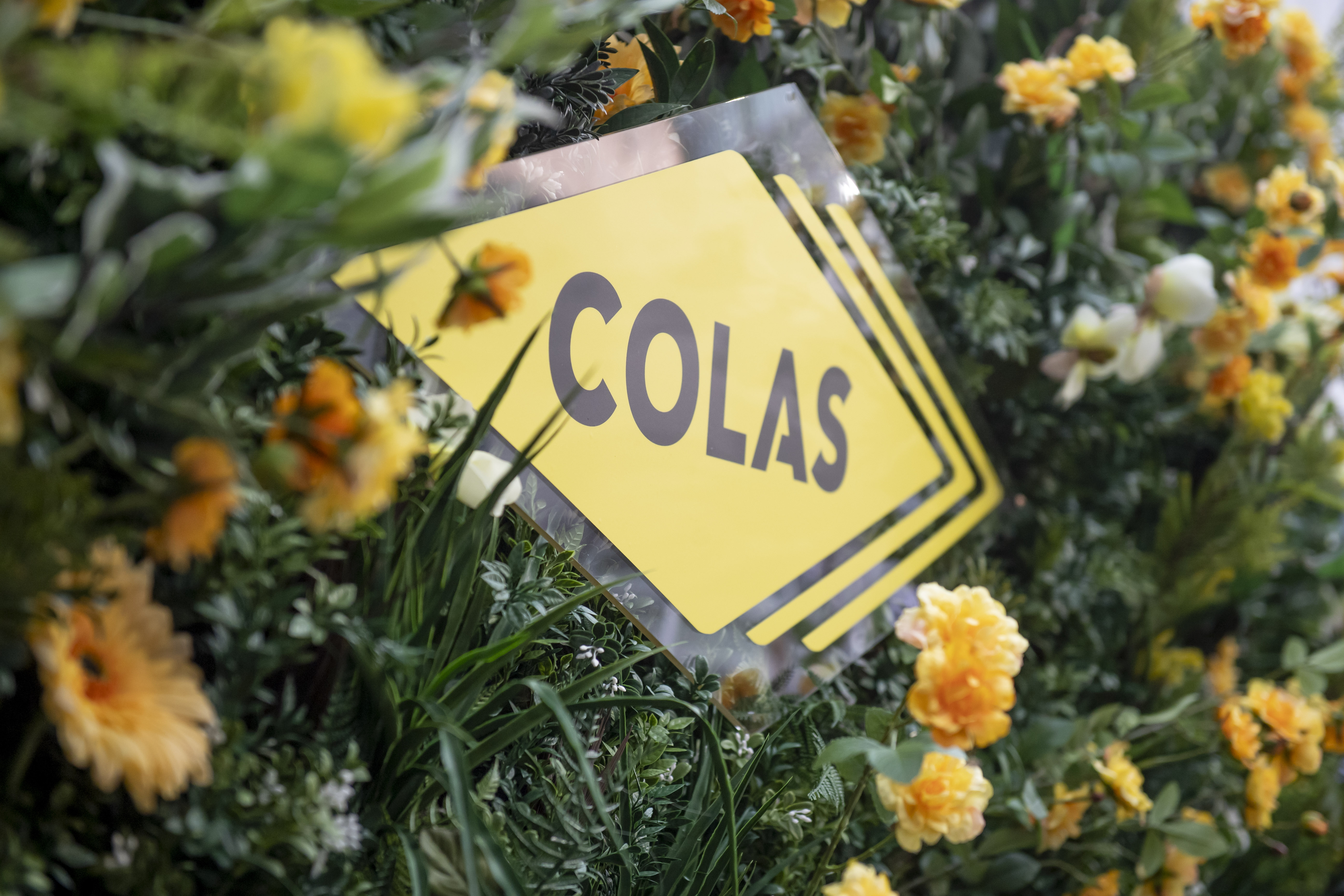Antiskid
Colasgrip
Colasgrip is a high performance high friction and coloured surfacing. It comprises of a two component thermosetting pigmentable epoxy resin binder dressed with natural or pigmented coloured aggregates, normally calcined bauxite or granite.
Make an enquiry
Additional Info
Colasgrip is a chemically curing system and can also be used for protection against fuel, oil spillage and de-icing salts. Colasgrip is supplied in road and heritage grades.
Where to use?
- Carriageways (especially junctions, bends, roundabouts and other hazard areas)
- Bus lanes
- Cycle lanes
- Pedestrian crossings
- Heritage/decorative
- Rumble strips
- Toll approaches
Preparation
Prior to application of Colasgrip, ensure that surfaces are clean, sound and dry.
- All dust, dirt and loose material should be swept from the surface.
- If the surface is dirty or contaminated by oil or grease, it should be water jet washed or cleaned using a 2% aqueous solution of detergent applied over the whole surface. The surface should then be scrubbed vigorously with a stiff brush to remove contaminants, thoroughly washed with clean water and allowed to dry or dried with a hot compressed air lance.
- Any damage to the surface or irregularity must be repaired properly before applying Colasgrip.
- New asphalt should be trafficked for at least four weeks before applying Colasgrip.
- Colasgrip should not be applied to “fatted up” black top or multi-layer surface dressings.
- Ensure the surface is completely dry and above 5°C.
- If necessary the texture depth of the surface should be studied and measured to determine the consumption rate of the binder. Measurement should be carried out using the sand patch method.
Mixing
- The A and B components (resin and hardener) may separate in the containers on storage. It is essential that each component is stirred using the low speed high torque drill fitted with helical stirrer for 2 minutes and re-dispersed properly before mixing together. Component A should be stirred first ensuring that the stirrer is cleaned before stirring Component B.
- If coloured binder is required 1 sachet of pigment should be added to component B and mixed for 2 minutes until it is a uniform colour.
- Empty the contents of the smaller container (A Component) into larger container (B Component) for mixing and blending.
- Mix contents together using the low speed high torque drill fitted with helical stirrer. Advised duration of mixing process – two minutes. It is essential that all of the component from each container are mixed thoroughly with the other component. Ensure material from the bottom, sides and corners is mixed properly. Failure to mix the binder properly will result in poor strength and cure of the system.
- In cold weather, store the binder overnight in a warm store. This lowers the viscosity of the binder and makes it easier to use. It may also be necessary to pre-warm the A and B components to 20°C to help pouring and blending.
Application
Colasgrip is ideal for the delineation of bus and cycle lanes, pedestrian crossings, junctions, bends, roundabouts and other hazard areas. For each type of application Colas can recommend the right type and size of aggregate to use.
Place the aggregate to one side.
The temperature of A & B components should be between +10°C and +35°C before mixing, with the ambient temperature range being between +5°C and +35°C.
The mixed binder should be poured out as uniformly as possible and distributed by squeegee with a serrated edge (v notches) 5mm wide and 5mm deep at 5mm centres. Care should be taken to obtain an even coating without puddles or thinly spread areas. Application rate will depend on texture depth and will be between 3-2.0kg/m².
Once satisfied that there is an even coating of the binder without puddles or thinly spread areas the aggregate should be applied as soon as possible. Bags of aggregate should be distributed along the length of the area to be covered to aid this application. As the epoxy resin is applied the bags are split and the aggregate applied onto the binder to excess. The aggregate should be “broadcast” onto the surface and where necessary a soft brush or flat bladed squeegee can be used to gently even distribution. Rolling is not required. Using 1-3mm aggregate the application rate is 10-12kg/m².
After all of the areas have been covered with aggregate to excess, the material must be allowed to cure. The time it will take the material to cure will vary according to the surface temperature, but is typically 2 hours at 25°C. After completion the area should be swept to remove excess aggregate to leave around 6-10m² of aggregate on the surface. The excess aggregate may be collected and used again as long as it has not been contaminated.
Use Leoclean cleaning fluid before mix has hardened .
Colasgrip can be applied by spray machine or by hand. For application by spray machine please refer to the method statement for spray application.
Equipment
The equipment required for the hand application of Colasgrip is generally composed of:
- 1 stirrer (low speed high torque drill fitted with helical stirrer)
- Serrated ‘V’ notched squeegees
- Mobile generator
- Mixing container
- Soft and stiff bristle brushes
- Shovel
Other optional equipment such as a mechanical sweeper with suction system and heating tanks may be required but this will depend on the size of the site(s).
Coverage
Binder: 1.4-2.2kg/m² (dependant on surface texture)
Aggregate: 10-12kg/m² (minimum 6-10kg/m² after sweeping)
Packaging
Colasgrip is supplied in premeasured kits containing sufficient binder and aggregate to treat approximately 5 or 16m² (subject to surface texture of substrate).
Storage
12 months if stored in dry conditions, under cover, above 10°C and out of direct sunlight.
Stir both components thoroughly before mixing with each other.
Standards
Colasgrip is produced to a manufacturing system accredited to ISO9001.
Safety
For full safety information, please request the Colasgrip Safety Data Sheets 128C and 129C using the contact information on this webpage.






